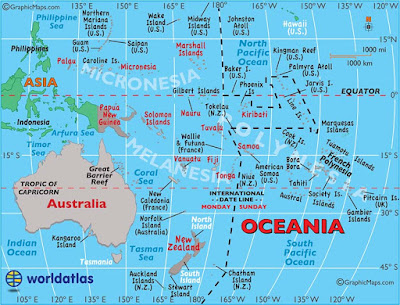Sailing Stones....
Sailing stones, also known as sliding rocks, walking rocks, rolling stones, and moving rocks, are a geological phenomenon where rocks move and inscribe long tracks along a smooth valley floor without human or animal intervention. Instead, rocks move when large ice sheets a few millimeters thick floating in an ephemeral winter pond start to break up during sunny days. These thin floating ice panels, frozen during cold winter nights, are driven by wind and shove rocks at up to 5 m/min.
Trails of sliding rocks have been observed and studied in various locations, including Little Bonnie Claire Playa in Nevada,and most famously at Racetrack Playa, Death Valley National Park, California, where the number and length of tracks are notable.
The Racetrack's stones speckle the playa floor, predominantly in the southern portion. Historical accounts identify some stones around 100 m (300 ft) from shore, yet most of the stones are found relatively close to their respective originating outcrops. Three lithologic types are identified: (1) syenite, found most abundant on the west side of the playa; (2) dolomite, subrounded blue-gray stones with white bands; and (3) black dolomite, the most common type, found almost always in angular joint blocks or slivers.This dolomite composes nearly all stones found in the southern half of the playa, and originates at a steep promontory, 260 m (850 ft) high, paralleling the east shore at the south end of the playa. Intrusive igneous rock originates from adjacent slopes (most of those being tan-colored feldspar-rich syenite). Tracks are often up to 100 m (330 ft) long, about 8 to 30 cm (3 to 12 in) wide, and typically much less than 2.5 cm (1 in) deep. Most moving stones range from about 6 to 18 in (15 to 46 cm) in diameter.
Stones with rough bottoms leave straight striated tracks, while those with smooth bottoms tend to wander. Stones sometimes turn over, exposing another edge to the ground and leaving a different track in the stone's wake.
Trails differ in both direction and length. Rocks that start next to each other may travel parallel for a time, before one abruptly changes direction to the left, right, or even back to the direction from which it came. Trail length also varies – two similarly sized and shaped rocks may travel uniformly, then one could move ahead or stop in its track.
News articles reported the mystery solved when researchers observed rock movements using GPS and time-lapse photography. The research team witnessed and documented rock movement on December 20, 2013, that involved more than 60 rocks, with some rocks moving up to 224 m between December 2013 and January 2014 in multiple movement events. These observations contradicted earlier hypotheses of winds or thick ice floating rocks off the surface. Instead, rocks move when large ice sheets a few millimeters thick floating in an ephemeral winter pond start to break up during sunny days. These thin floating ice panels,frozen during cold winter nights, are driven by light winds and shove rocks at up to 5 m/min (0.3 km/h). Some GPS-measured moves lasted up to 16 minutes, and a number of stones moved more than five times during the existence of the playa pond in the winter of 2013-14.
Ralph Lorenz, a planetary scientist, investigated the phenomenon in 2006. To illustrate the "ice raft" theory, Lorenz developed an experiment using a kitchen-table model using a container to show how heavy rocks might glide across the surface of the lake bed. A bed of sand is added to the bottom of the Tupperware, a rock is placed on the sand, and water is added until only a small edge of the rock sticks out. After putting the container in the freezer until the water is frozen, then removing the container and letting the ice begin to melt, Lorenz could end up with a small raft of floating ice with a rock embedded in it. All he had to do was gently blow on the floating ice sheet to get the rock to drag across the sand. While these experiments, and the buoyant lifting of rocks, are doubtless relevant on some occasions, the January 2014 trail-forming events did not appear to rely on buoyancy, but the rocks were simply bulldozed.





Comments
Post a Comment